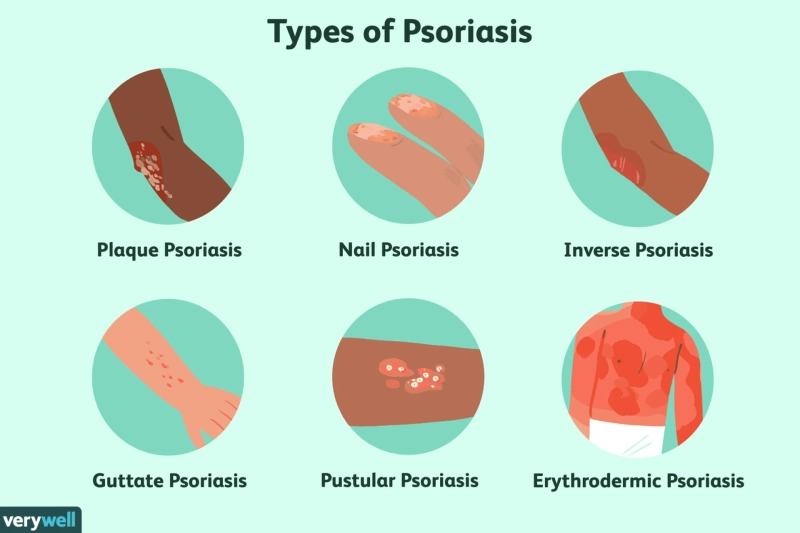Psoriasis is an immune-mediated chronic skin disease that typically affects the skin of a person due to abnormalities of the immune system. The cells develop more rapidly on the skin than usual, creating thick and scaly plaques that may cause discomfort and itchiness for the person.
Various forms of psoriasis may appear in different locations of the body. Knowing the type can help you and your doctor plan the treatment accordingly. Let us know about the different types of psoriasis.
- Plaque Psoriasis: It is the most common type, which is also called “psoriasis vulgaris” by some doctors. The disease appears as a raised, inflamed, red skin with silvery or white scales. It may cause burning sensations and itchiness on the patches. It can affect any part of the body, but the most commonly affected areas are the elbows, knees, scalp, around the belly button, and lower back.
- Guttate Psoriasis: It is found in less than 8% of all cases and mostly starts during childhood or young adulthood. It appears as small red spots on the skin called papules. These papules are raised and sometimes scaly as well. The color of these spots may appear as violet or brown on dark skin tones. They mostly appear on the arms, legs, torso, and limbs, but sometimes you may find them on the face and scalp as well.
- Inverse Psoriasis: Also known as flexural, mostly appears in the skinfold where more moisture and sweating are likely to congregate. Its most commonly affected areas are the armpits, groin, under the breast, around the genitals, buttocks, and other skin folds. It appears as bright red, smooth, and shiny patches. The problem gets worse when irritation increases due to rubbing and sweating. This type is more common in people who are overweight and have deep body folds.
- Erythrodermic Psoriasis: It is a rare but very serious condition in which large areas of the body are affected by inflammation. The person may also experience severe itching, pain, and large-scale skin shedding. Also, sometimes the patient experiences symptoms like a faster heart rate and changes in body temperature, which can cause shivering. As the condition becomes severe, it disturbs the body’s chemical balance, which causes protein and fluid loss. This interference causes severe complications such as pneumonia and congestive heart failure.
- Pustular Psoriasis: It is also a rare form of psoriasis that mostly appears in adults. It appears as white or pus-filled pustulates that are surrounded by red or darkened skin. The pus on the skin is not contagious and is caused by inflammation. It mostly covers certain areas of the body, like the hands and feet, but may cover other parts as well, which can be life-threatening.
- Psoriatic Arthritis: It is a condition where the person suffers from both psoriasis and arthritis. In most cases, it has been found that people have psoriasis for about 10 years before they get psoriatic arthritis. Many of them also suffer from nail changes. It can affect many joints, causing pain and stiffness, especially in the morning, or after inactivity for a very long time.
0



